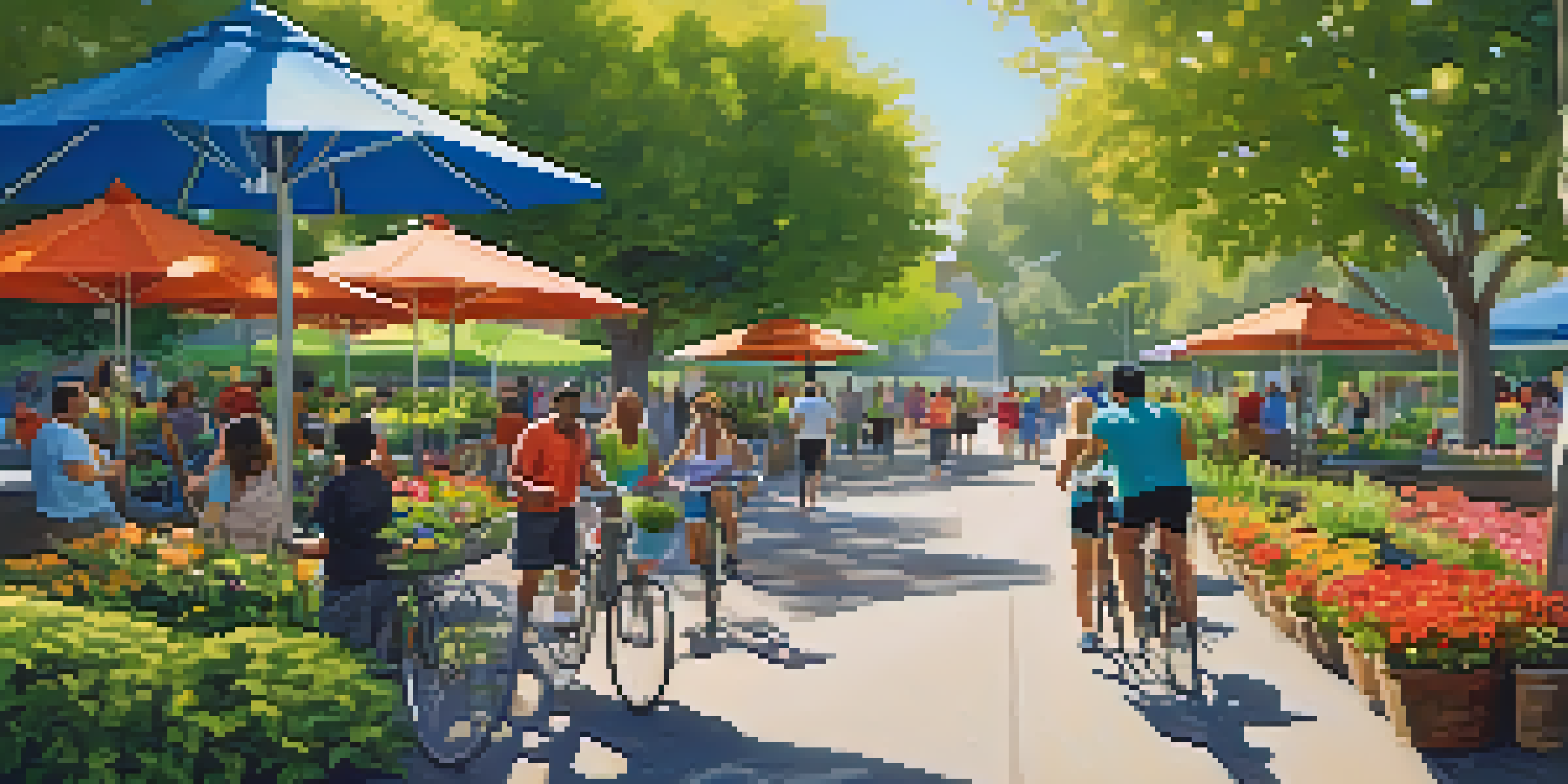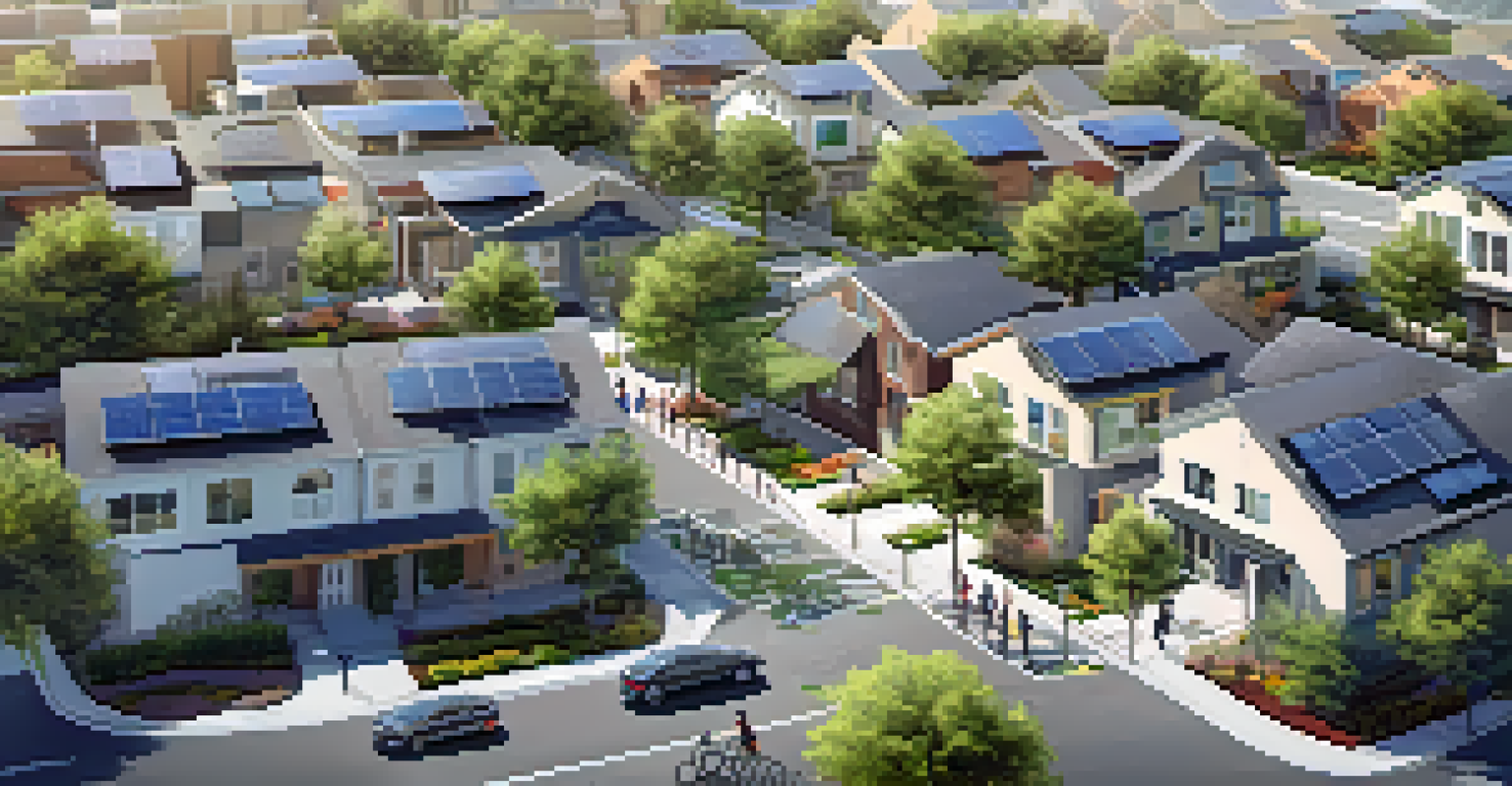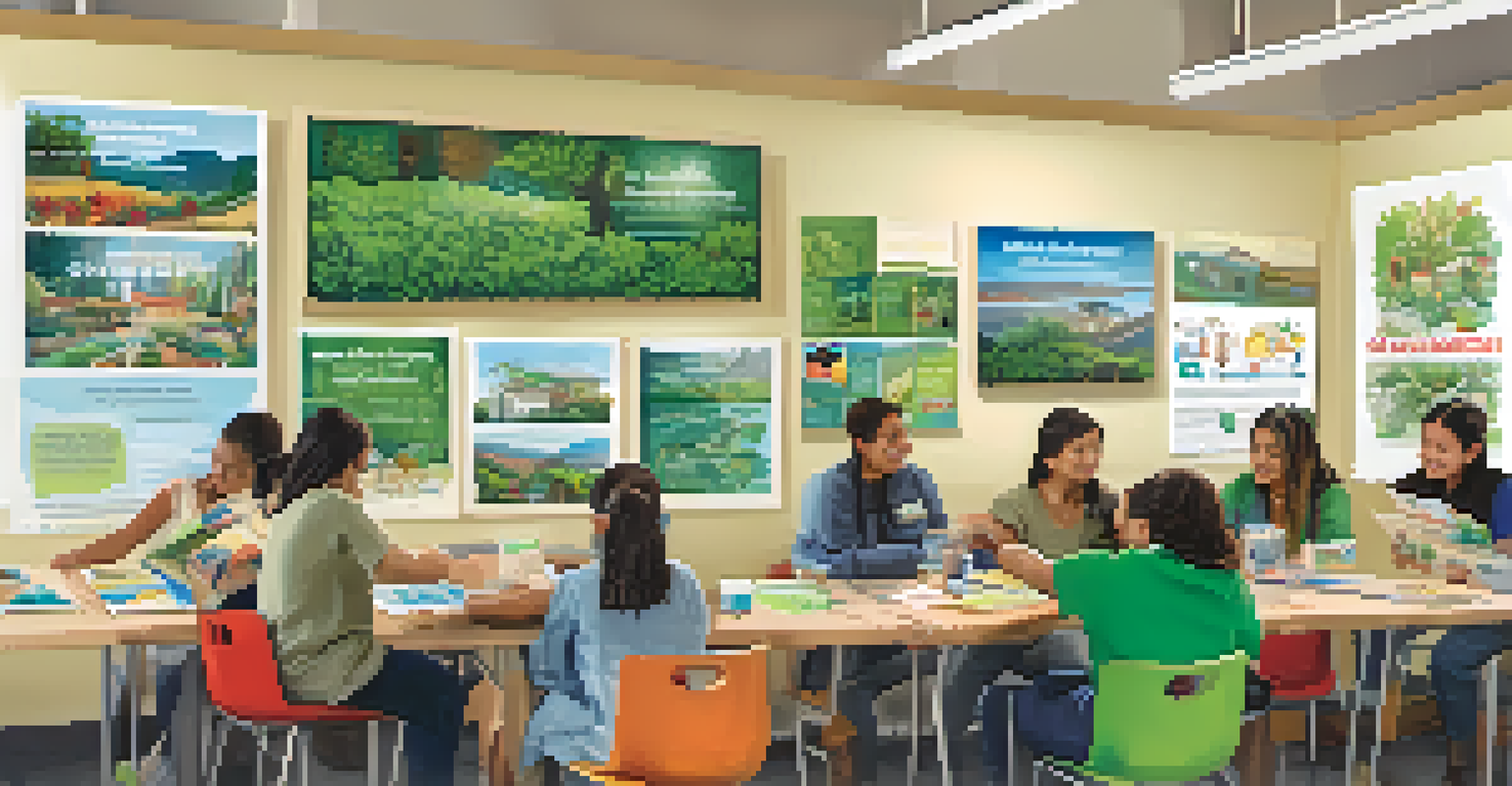San Jose's Pioneering Sustainable Design Initiatives

Introduction to San Jose's Sustainable Vision
San Jose has emerged as a leader in sustainable design, showcasing innovative strategies to enhance urban living. The city's commitment to sustainability is rooted in its broader vision of creating a healthier and more resilient community. By prioritizing environmental responsibility, San Jose aims to inspire other cities to adopt similar initiatives.
Sustainability is no longer about doing less harm. It's about doing more good.
This drive for sustainability is reflected in the city's comprehensive plans, which emphasize eco-friendly development and the preservation of natural resources. From green building standards to energy-efficient practices, San Jose's approach is both holistic and forward-thinking. It's a city where sustainability is not just a buzzword but a guiding principle.
As we delve into the various initiatives spearheaded by San Jose, you'll see how each project contributes to a larger narrative of environmental stewardship and social equity. These efforts are not only about protecting the planet but also about enhancing the quality of life for all residents.
Green Building Standards and Certification
San Jose has adopted rigorous green building standards that encourage developers to prioritize sustainability in their projects. The city promotes the use of LEED (Leadership in Energy and Environmental Design) certification, which ensures that buildings meet high environmental performance standards. This certification process evaluates factors like energy efficiency, water conservation, and material sustainability.

By incentivizing LEED-certified buildings, San Jose is fostering a culture of accountability among developers. These standards not only reduce the environmental impact of new constructions but also provide long-term cost savings for building owners and tenants alike. It's a win-win situation that demonstrates how sustainable practices can align with economic interests.
San Jose's Green Building Standards
San Jose promotes rigorous green building standards, including LEED certification, to ensure sustainable construction practices.
Moreover, the city's commitment to green building extends beyond commercial spaces. Residential developments are also being encouraged to adopt these standards, creating neighborhoods that are not only beautiful but also environmentally conscious. This holistic approach to building design is setting a benchmark for sustainable urban development.
Urban Green Spaces and Community Engagement
One of the standout features of San Jose's sustainable initiatives is the emphasis on urban green spaces. Parks and community gardens are being integrated into the urban landscape to promote biodiversity and provide recreational opportunities for residents. These green spaces serve as vital lungs for the city, improving air quality and enhancing the overall well-being of the community.
The greatest threat to our planet is the belief that someone else will save it.
Community engagement plays a crucial role in the development of these green spaces. Residents are often invited to participate in planning and maintenance, fostering a sense of ownership and pride in their neighborhoods. This collaborative approach not only strengthens community bonds but also ensures that the spaces meet the needs of local residents.
Additionally, these urban green areas are designed to be resilient against climate change impacts, such as flooding and heatwaves. By incorporating native plants and sustainable landscaping practices, San Jose is creating habitats that support local wildlife while also offering refuge for residents seeking a connection to nature.
Innovative Transportation Solutions
Transportation is a critical component of San Jose's sustainability strategy. The city is investing in innovative transportation solutions that promote public transit, cycling, and walking as viable alternatives to car travel. By enhancing these options, San Jose aims to reduce traffic congestion and lower greenhouse gas emissions.
The introduction of dedicated bike lanes and pedestrian-friendly infrastructure has made it easier for residents to choose sustainable modes of transport. This not only improves air quality but also promotes a healthier lifestyle by encouraging physical activity. The city's efforts are designed to create a more accessible urban environment for everyone.
Urban Green Spaces Enhance Community
The city focuses on creating urban green spaces that improve air quality and foster community engagement through local involvement.
Furthermore, San Jose is exploring smart transportation technologies, such as real-time transit tracking and electric vehicle charging stations. These advancements not only make public transit more convenient but also align with the city's goal of reducing its carbon footprint. It's a forward-thinking approach that positions San Jose as a model for other cities grappling with transportation challenges.
Renewable Energy Initiatives
San Jose is making significant strides in renewable energy adoption, aiming to power the city with clean, sustainable sources. The city has set ambitious goals to transition to 100% renewable energy by 2030, a target that reflects its commitment to combating climate change. This initiative is generating excitement and action among residents and businesses alike.
Solar energy is at the forefront of San Jose's renewable energy strategy. The city encourages the installation of solar panels on residential and commercial buildings, providing incentives to make the transition more accessible. This not only helps reduce energy costs but also empowers residents to play an active role in the fight against climate change.
In addition to solar, San Jose is exploring wind and other renewable energy sources to diversify its energy portfolio. By investing in local renewable projects, the city is not only enhancing energy security but also creating jobs in the green economy. This comprehensive approach to energy sustainability is setting a powerful example for other cities to follow.
Waste Reduction and Recycling Programs
Waste management is a crucial aspect of San Jose's sustainable design initiatives. The city has implemented comprehensive recycling and composting programs aimed at reducing landfill waste and promoting responsible consumption. These programs encourage residents to recycle everyday items and compost organic waste, significantly lowering the city's overall waste footprint.
San Jose's 'Zero Waste' goal is ambitious, targeting a diversion of 100% of waste from landfills by 2030. This initiative involves not only citywide programs but also education and outreach efforts to engage the community in sustainable practices. By raising awareness and providing resources, San Jose is empowering residents to make environmentally friendly choices.
Innovative Transportation Solutions
San Jose invests in innovative transportation options, such as bike lanes and smart technology, to reduce traffic congestion and emissions.
Moreover, the city is partnering with local businesses to minimize waste generation and promote sustainable practices. These collaborations are essential in building a circular economy where materials are reused and recycled, reducing the need for new resources. This commitment to waste reduction exemplifies San Jose's holistic approach to sustainability.
Community Education and Outreach Efforts
Education is a cornerstone of San Jose's sustainable initiatives. The city recognizes that informed residents are key to the success of its environmental goals. Through workshops, events, and online resources, San Jose is actively educating its community about the importance of sustainability and how they can contribute.
Programs focusing on energy conservation, water efficiency, and waste reduction equip residents with practical tools for sustainable living. These initiatives not only raise awareness but also foster a culture of sustainability that permeates everyday life. When individuals understand the impact of their choices, they are more likely to adopt eco-friendly habits.

Additionally, San Jose collaborates with schools and local organizations to integrate sustainability education into curricula. By inspiring the next generation, the city is ensuring that future leaders prioritize environmental stewardship. This emphasis on education reinforces the idea that sustainability is a shared responsibility.
Conclusion: A Model for Sustainable Urban Living
San Jose's pioneering sustainable design initiatives are reshaping the urban landscape and setting a benchmark for cities around the globe. The city's multifaceted approach—encompassing green building, transportation solutions, waste management, and community engagement—demonstrates that sustainability can be woven into the very fabric of urban life. It's not just about policies; it's about creating a livable, vibrant community.
As other cities look to San Jose for inspiration, the lessons learned here are invaluable. The emphasis on collaboration, education, and innovation serves as a guide for those striving to achieve similar sustainability goals. It's a reminder that every city can make impactful changes by prioritizing environmental responsibility and community well-being.
Ultimately, San Jose is proving that a sustainable future is not only possible but also desirable. By continuing to champion these initiatives, the city is paving the way for generations to come, ensuring that urban living aligns harmoniously with the planet's health. San Jose is not just a city; it's a movement towards a more sustainable world.